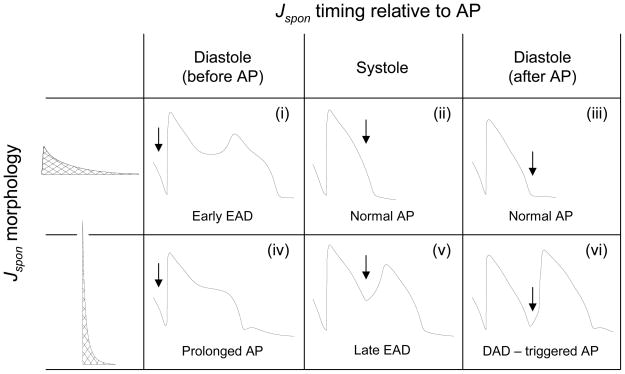Fig. 4.
Effect of Jspon parameter values and timing of the Jspon onset in the AP cycle on AP morphology. Table shows representative V traces for the two Jspon morphologies (low amplitude/long duration versus high amplitude/short duration) and three different times of Jspon onset relative to the final paced AP (starting in diastole just before the AP, in systole, and in diastole just after the AP). Arrow indicates exact time Jspon onset begins. For the low amplitude/long duration case, Jspon in diastole just before the AP can cause an early EAD (i), as in Fig. 2. Jspon in systole or in diastole just after the AP has no effect on the AP (ii,iii). For the high amplitude/short duration case, Jspon in diastole just before the AP prolongs the AP (iv, the DAD in the trace is due to a second, smaller Jspon event occurring just after the AP). Jspon in systole can cause a late EAD (v), as in Fig. 4. Jspon in diastole just after the AP can cause a DAD that then triggers a new AP (vi).

